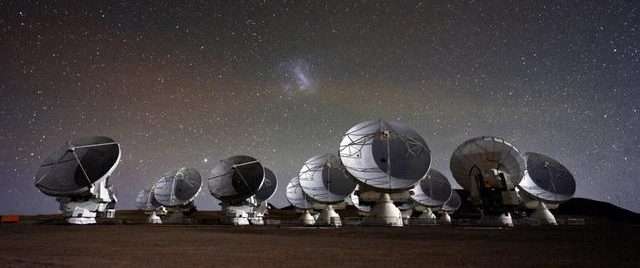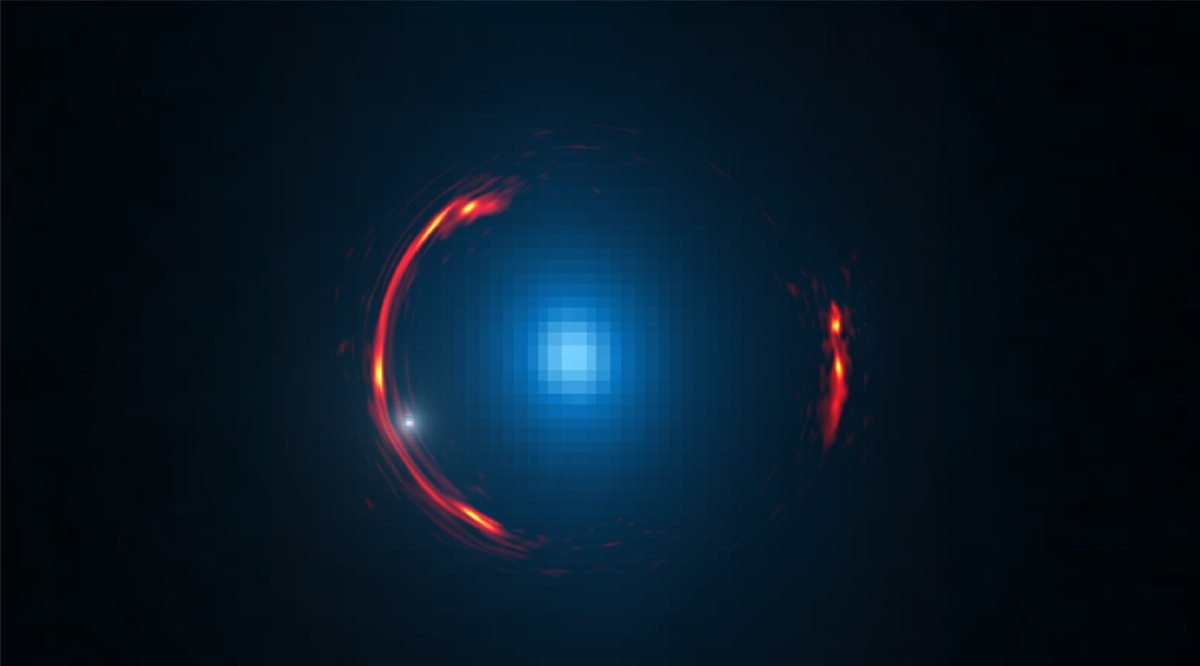In Search of Dark Dwarf Galaxies

The Atacama Large Millimeter/submillimeter Array (ALMA), showing the telescope’s antennae under a starry night sky. – ALMA Observatory
CITA Director Norman Murray is part of a team led by Yashar Hezaveh that recently analyzed and published data that could help solve the mystery of dark matter, which comprises roughly a quarter of the mass-energy in our universe.
The cosmological theory of cold dark matter (CDM) predicts that dark matter, the “glue” that holds our universe together, is cold: its particles move around slowly enough that their mutual gravitational pull could sequester them into small dense clumps, which would eventually collect enough dust to form stars and dwarf galaxies. Several of these dwarf galaxies would then merge to form larger galaxies like our own Milky Way.
The CDM theory posits that the smaller the clumps, the more abundant they should be. In order for the theory to be proven right, our own galaxy should be orbited by several thousand dwarf galaxies, yet till recently, only ~150 dwarf galaxies had been found: the missing satellite problem. This phenomenon suggested that either 1) The CDM theory was wrong because the dwarf galaxies observed are all that were present or 2) The satellites are present but are invisible, either because of lack of sufficiently sensitive equipment or because some dwarf galaxies do not have enough stars to be visible (subhalos).
The most direct way to measure the number of clumps, whether or not they have visible stars, is to look for gravitational distortions generated by their mass, in a process known as gravitational lensing. Large numbers of gravitational lenses have been discovered over the last several years. One method of measuring the number of subhalos near a visible galaxy — that is lensing a background galaxy — is to look for certain characteristic distortions of the lens image produced by the subhalo’s gravity. Hezaveh and his team used the ALMA telescope to study just such a galaxy (SDP.81) whose light was being distorted by a foreground galaxy. If a subhalo existed in the halo of the foreground galaxy, it would then further distort SDP81’s light, like a water drop on a lens.

“Composite image of the gravitational lens SDP.81 showing the distorted image of the more distant galaxy (red arcs) and the nearby lensing galaxy (blue center object). By analyzing the distortions in the ring, astronomers have determined that a dark dwarf galaxy (data indicated by white dot near left lower arc segment) is lurking nearly 4 billion light-years away. Credit: Y. Hezaveh, Stanford Univ.; ALMA (NRAO/ESO/NAOJ); NASA/ESA Hubble Space Telescope” –ALMA Press Release
Using a combination of these various observational and analytical techniques, Murray and the team discovered a subhalo ~1 billion times the mass of our sun. ALMA’s sensitivity affords researchers the ability to discover subhalos even 100x less massive, allowing them to find more of the dark matter clumps to support the CDM theory.
Further Reading:
- BBC: The hunt for invisible dwarf galaxies
- ALMA: Dwarf dark galaxy hidden in ALMA gravitational lens image
- Original Publication: Detection of lensing substructure using ALMA observations of the dusty galaxy SDP.81
By: Sonia Sugumar